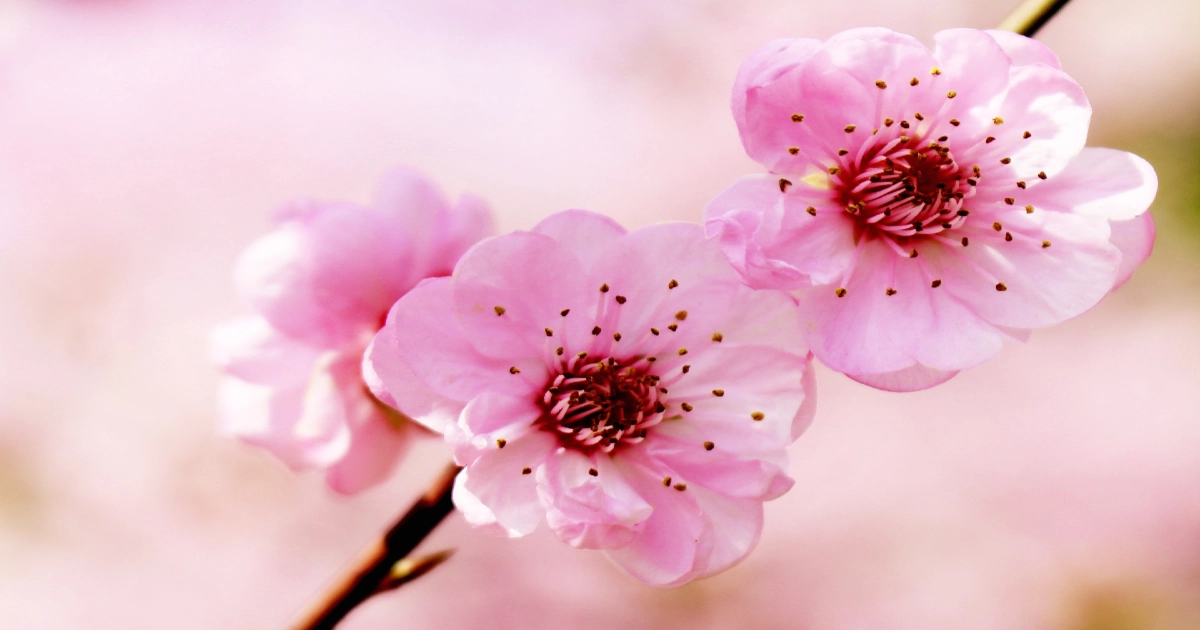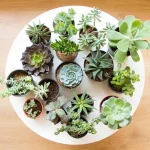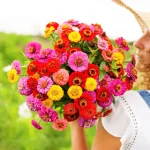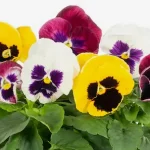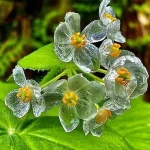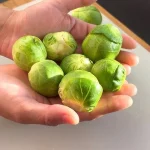Varieties of Cherry Blossom Trees
Cherry blossom trees, or sakura, come in a wide range of varieties, each with unique characteristics. Here are some of the most notable varieties:
1. Yoshino Cherry (Prunus x yedoensis)
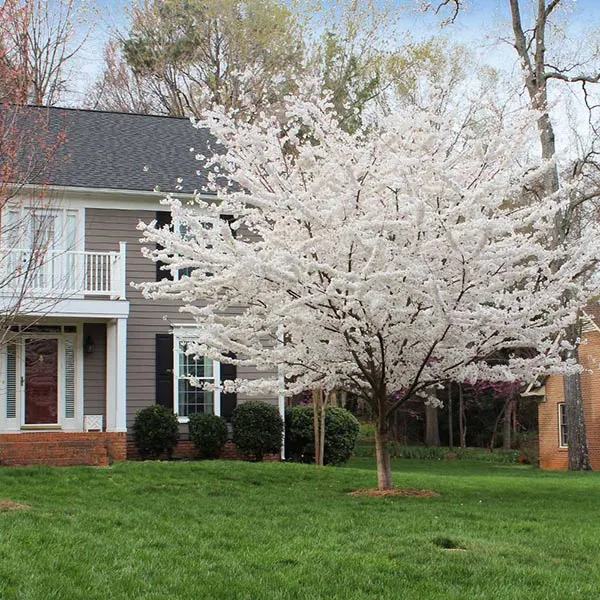
Description: One of the most popular and widely planted varieties, known for its fragrant, pale pink to white blossoms.
Origin: Japan.
Blooming Season: Early to mid-spring.
2. Kwanzan Cherry (Prunus serrulata ‘Kwanzan’)
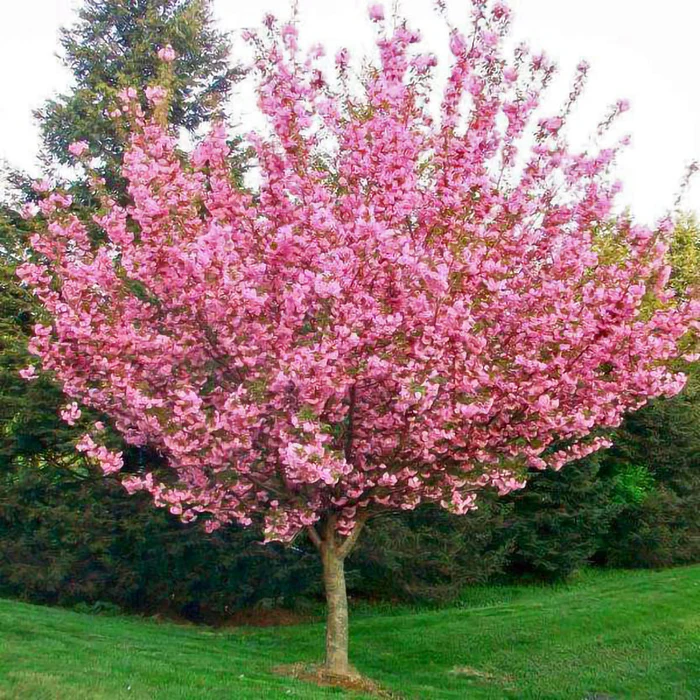
Description: Renowned for its stunning, double-pink flowers and decorative appeal.
Origin: Japan.
Blooming Season: Mid to late spring.
3. Weeping Cherry (Prunus subhirtella ‘Pendula’)
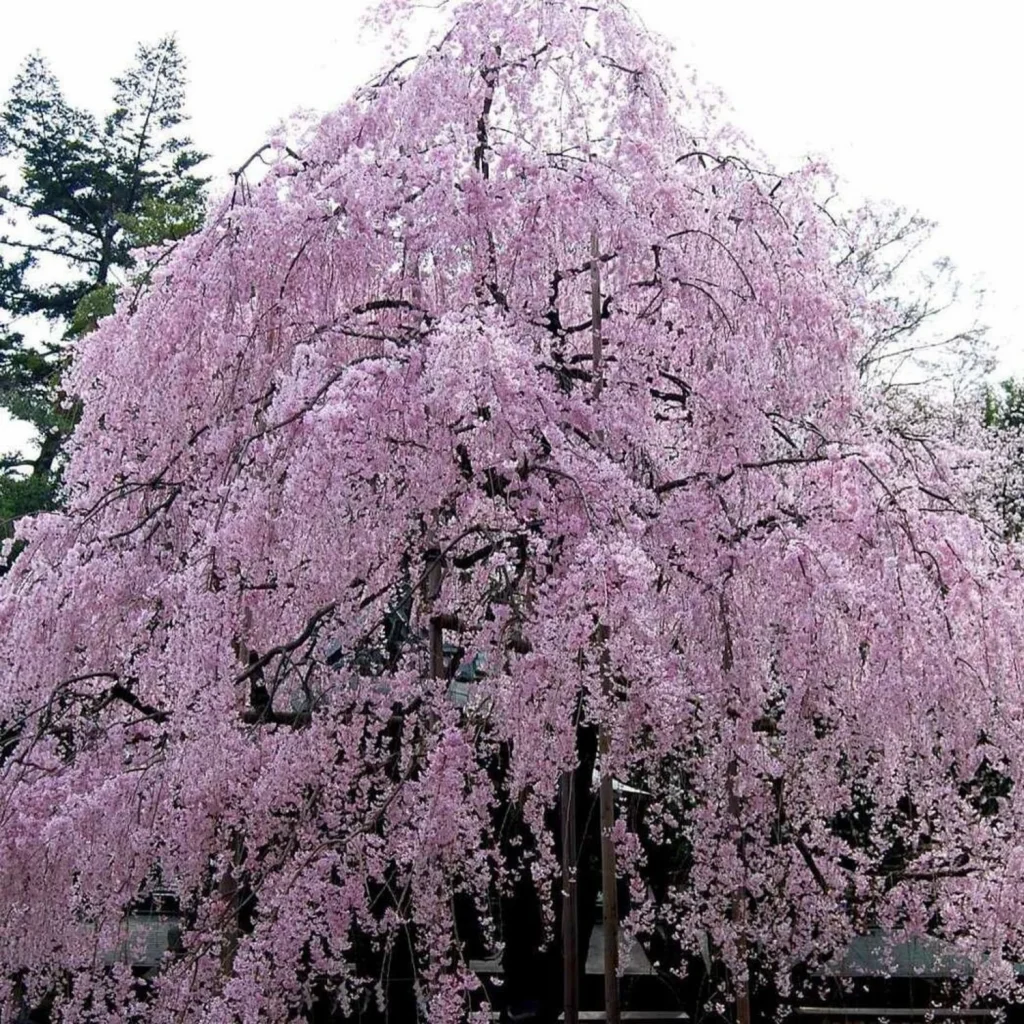
Description: Recognized by its graceful, weeping branches and light pink or white flowers.
Origin: Japan.
Blooming Season: Early spring.
4. Shirofugen Cherry (Prunus serrulata ‘Shirofugen’)
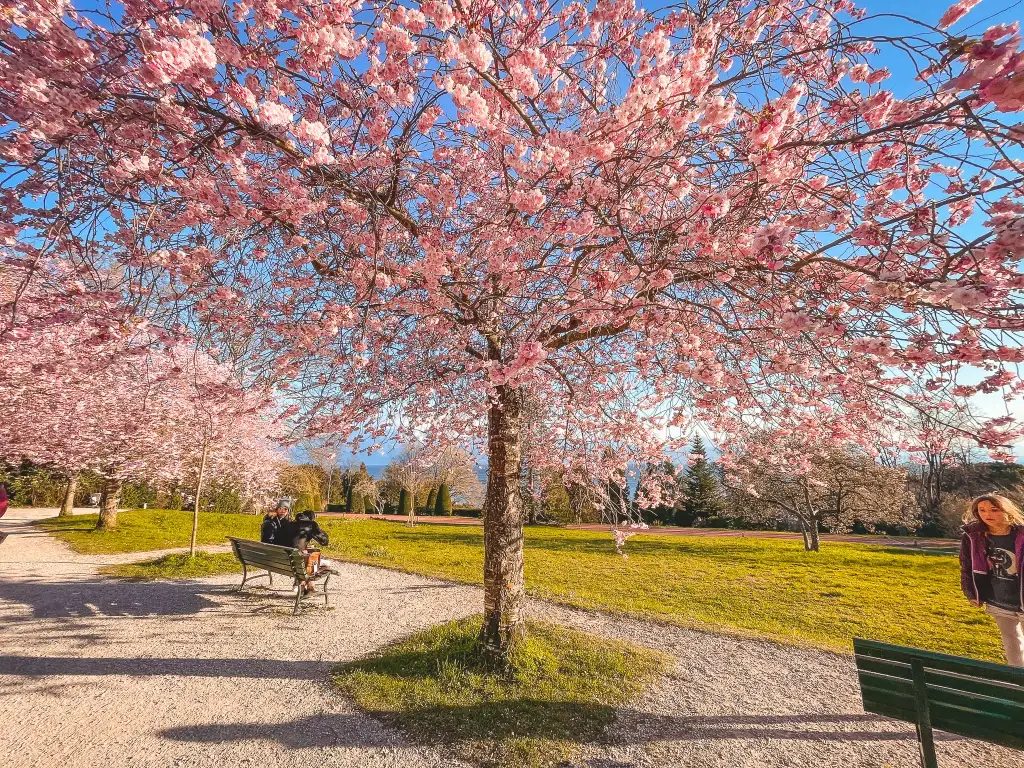
Description: Known for its large, double white flowers that turn pink over time.
Origin: Japan.
Blooming Season: Late spring.
5. Okame Cherry (Prunus ‘Okame’)
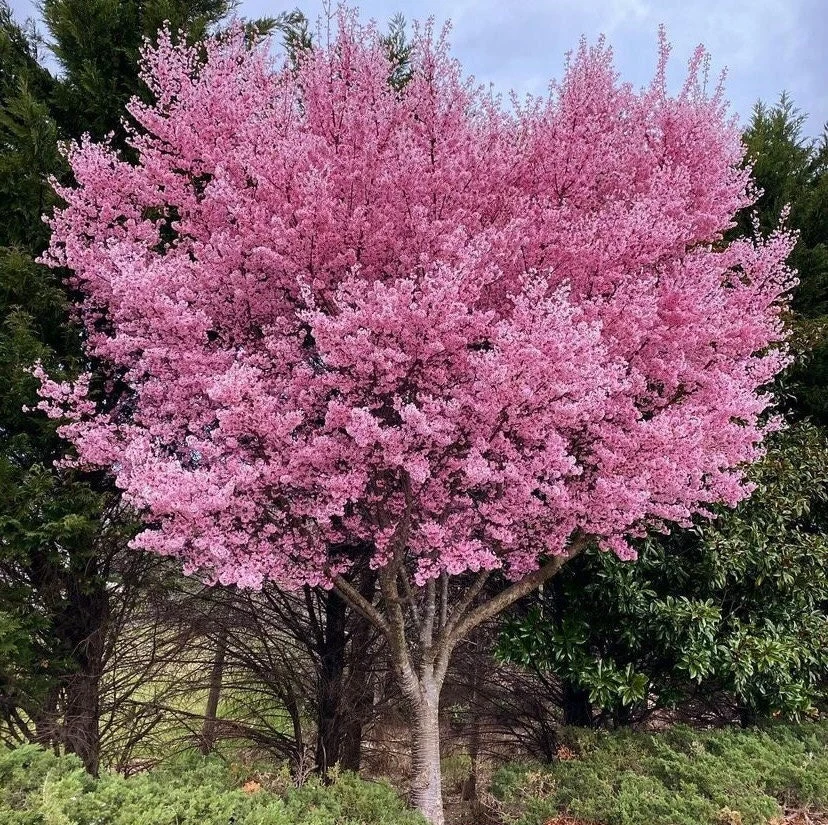
Description: Characterized by its small, rosy pink flowers and early blooming period.
Origin: Hybrid of Prunus incisa and Prunus campanulata.
Blooming Season: Early spring.
6. Autumn Cherry (Prunus subhirtella ‘Autumnalis’)
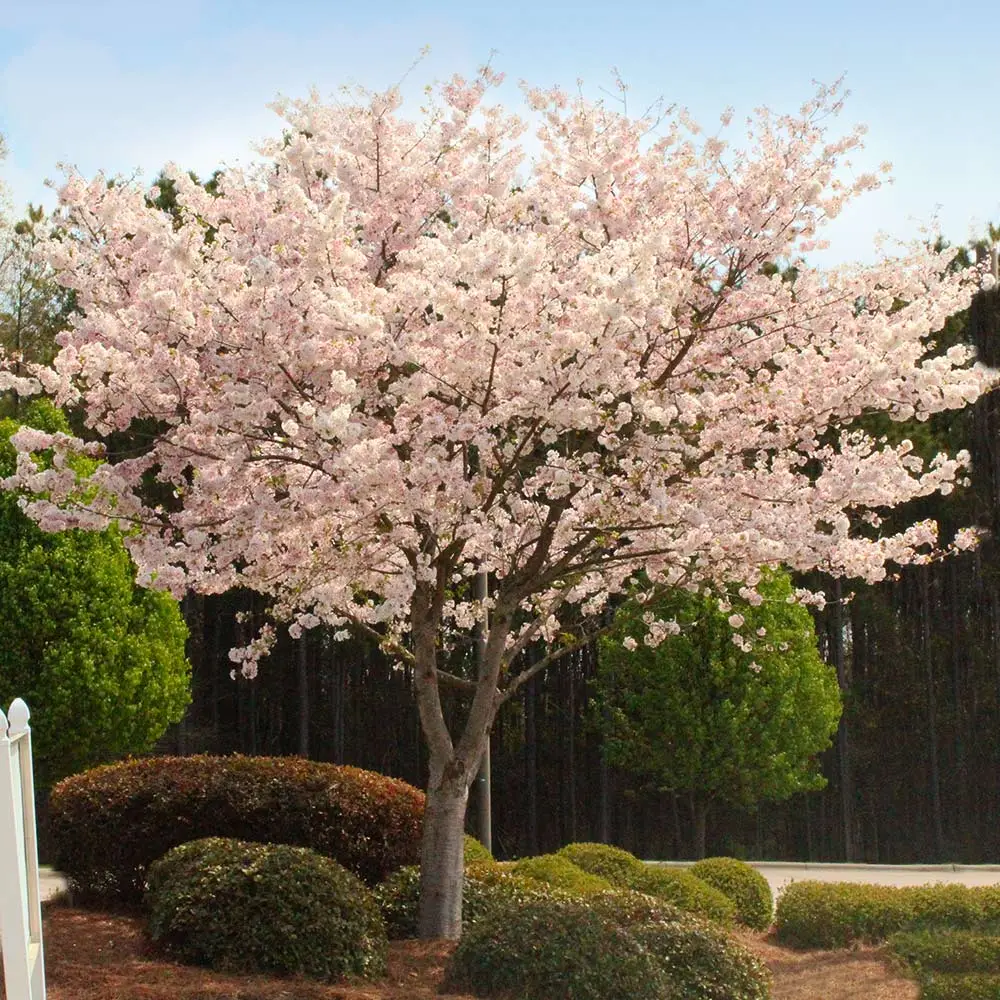
Description: Unique for its ability to bloom in both fall and spring with small, semi-double flowers.
Origin: Japan.
Blooming Season: Fall and early spring.
7. Sargent’s Cherry (Prunus sargentii)
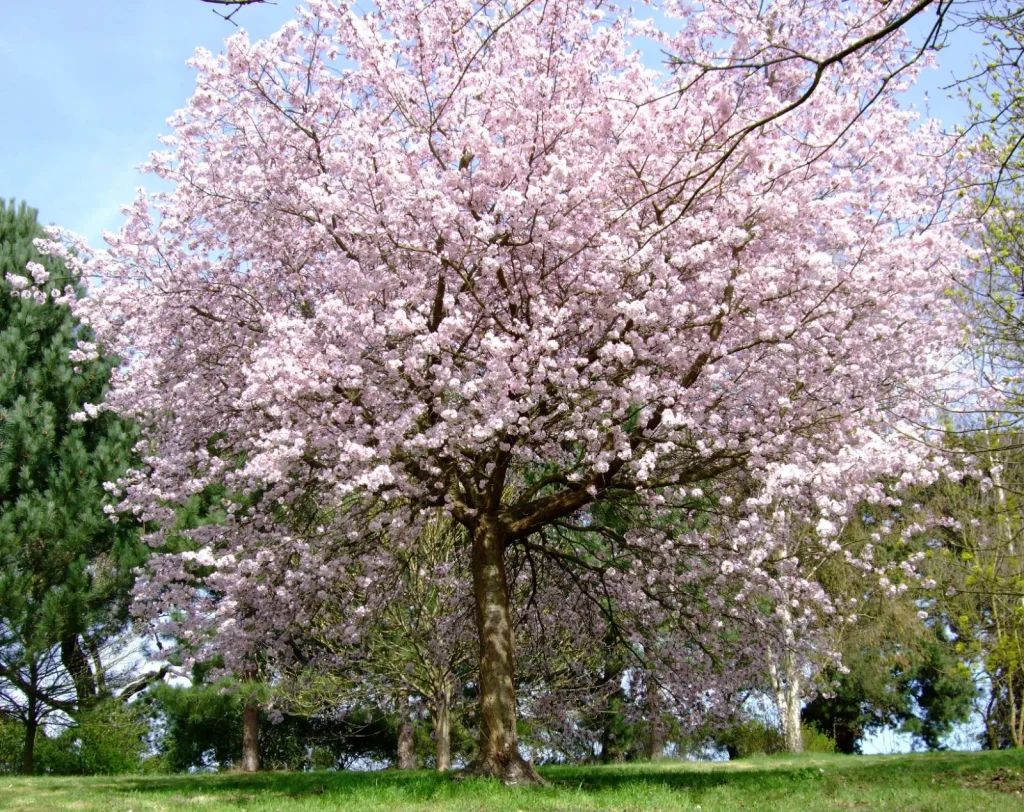
Description: Notable for its bright pink, single flowers and vibrant autumn foliage.
Origin: Japan, Korea, and Russia.
Blooming Season: Mid-spring.
8. Takesimensis Cherry (Prunus takesimensis)
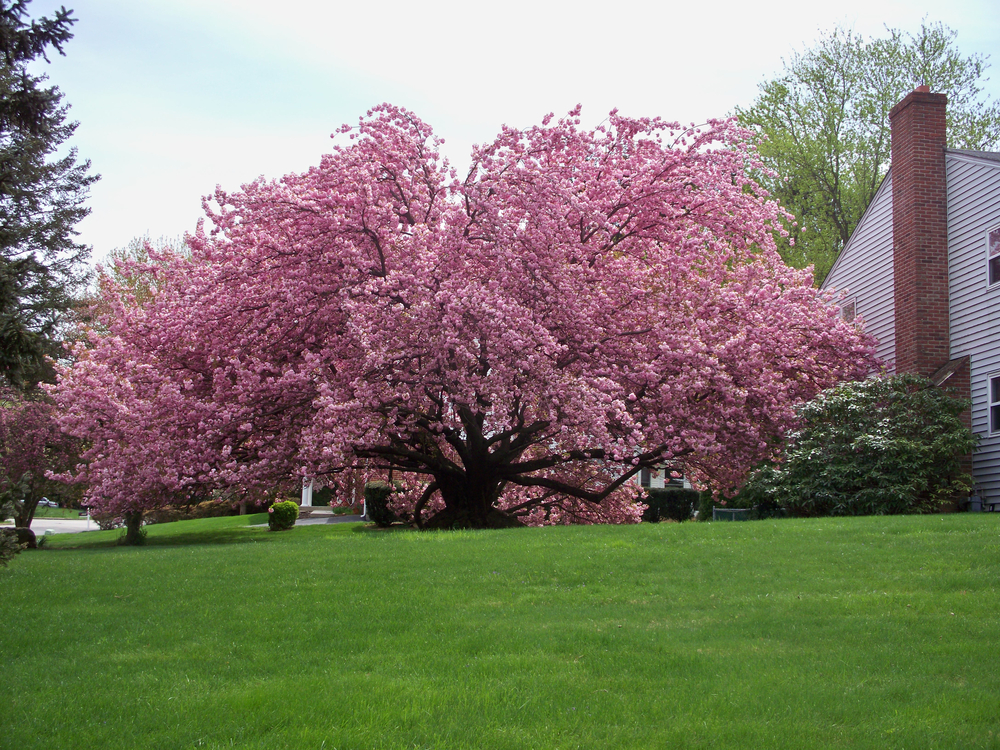
Description: Known for its beautiful white blossoms and high tolerance to urban conditions.
Origin: Ulleungdo Island, Korea.
Blooming Season: Mid to late spring.
Each variety of cherry blossom tree offers its own unique beauty and charm, contributing to the rich tapestry of sakura enjoyed around the world.
Care for Cherry Blossom Trees
Cherry blossom trees, or sakura, are relatively easy to care for if provided with the right conditions. Here are the key aspects to ensure your cherry blossom tree thrives:
1. Planting Location
Sunlight: Choose a location that receives full sun, at least 6 hours of direct sunlight per day.
Soil: Well-draining soil is crucial. Loamy soil with a slightly acidic to neutral pH is ideal.
Space: Ensure adequate space for the tree to grow. Cherry blossom trees can spread widely, so avoid planting too close to buildings or other trees.
2. Watering
Young Trees: Water deeply once a week during the first year. Ensure the soil is moist but not waterlogged.
Established Trees: Water during dry periods, especially in the summer. Avoid overwatering to prevent root rot.
3. Mulching
Purpose: Mulch helps retain soil moisture, regulate temperature, and suppress weeds.
Application: Apply a 2-3 inch layer of organic mulch around the base of the tree, but keep it away from the trunk to prevent rot.
4. Fertilizing
Timing: Fertilize in early spring before blooming and again in early summer.
Type: Use a balanced, slow-release fertilizer, following the package instructions for dosage.
5. Pruning
Timing: Prune in late winter or early spring before new growth starts.
Purpose: Remove dead, diseased, or crossing branches. Pruning helps maintain the tree’s shape and encourages healthy growth.
Technique: Use clean, sharp pruning tools to make clean cuts.
6. Pest and Disease Control
Common Pests: Aphids, caterpillars, and borers can affect cherry blossom trees. Inspect regularly and treat with appropriate insecticides if needed.
Diseases: Watch for signs of fungal infections, such as powdery mildew or cherry leaf spot. Use fungicides and ensure good air circulation by pruning properly.
7. Protection from Extreme Weather
Frost: Young cherry blossom trees are sensitive to late frosts. Protect them with frost cloths or by placing them in sheltered locations.
Wind: Strong winds can damage branches and blossoms. Plant in a protected area or use windbreaks.
8. General Maintenance
Weeding: Keep the area around the tree free of weeds to reduce competition for nutrients.
Monitoring: Regularly check for signs of stress, such as yellowing leaves or stunted growth, and address issues promptly.
With proper care, cherry blossom trees can be a stunning addition to any garden, providing beautiful blooms and a touch of elegance each spring.
Health Benefits of the Cherry Blossom Tree
Cherry blossom trees, while primarily celebrated for their aesthetic appeal, also offer several health benefits, particularly through their flowers and leaves. Here are some of the notable health benefits:
1. Antioxidant Properties
Description: Cherry blossoms contain antioxidants that help combat free radicals in the body.
Benefits: Antioxidants reduce oxidative stress, which can help prevent chronic diseases such as heart disease and cancer.
2. Anti-Inflammatory Effects
Description: Extracts from cherry blossoms have anti-inflammatory properties.
Benefits: These properties can help reduce inflammation in the body, alleviating conditions such as arthritis and skin irritations.
3. Skin Health
Description: Cherry blossom extracts are commonly used in skincare products.
Benefits: They help to hydrate and smooth the skin, reduce redness and irritation, and improve overall skin texture. The antioxidants and anti-inflammatory properties also aid in slowing down the aging process.
4. Calming and Relaxing
Description: The fragrance of cherry blossoms has a soothing and calming effect on the mind.
Benefits: This can help reduce stress, anxiety, and promote relaxation, contributing to better mental health.
5. Anti-Aging
Description: The antioxidant properties of cherry blossom extracts help protect the skin from environmental damage.
Benefits: This can slow down the aging process by preventing wrinkles, fine lines, and other signs of aging.
6. Detoxification
Description: Cherry blossom tea made from the leaves and flowers is believed to have detoxifying properties.
Benefits: Drinking cherry blossom tea can help cleanse the body by removing toxins, promoting better overall health.
7. Immune Support
Description: The compounds found in cherry blossoms can help boost the immune system.
Benefits: A stronger immune system can better protect the body against infections and illnesses.
8. Mood Enhancement
Description: Exposure to cherry blossoms and spending time in nature among these trees can have positive effects on mood.
Benefits: This can lead to improved mental well-being, reduced symptoms of depression, and enhanced overall happiness.
While the primary allure of cherry blossom trees lies in their beauty, these health benefits add another layer of value, making them not only a delight for the eyes but also beneficial for overall well-being.
Diseases and Solutions for Cherry Blossom Trees
Cherry blossom trees, like all plants, are susceptible to a variety of diseases. Recognizing these diseases and applying the correct solutions is essential for maintaining the health and beauty of the trees.
1. Cherry Leaf Spot
Description: Caused by the fungus Blumeriella jaapii, this disease appears as small purple or red spots on the leaves.
Symptoms: Leaves turn yellow and fall prematurely.
Solution:
Fungicide: Apply a fungicide in early spring and repeat as needed.
Sanitation: Rake and destroy fallen leaves to reduce fungal spores.
2. Powdery Mildew
Description: A fungal disease characterized by a white, powdery coating on leaves, stems, and buds.
Symptoms: Leaves may curl, become distorted, and fall prematurely.
Solution:
Fungicide: Use sulfur-based fungicides.
Air Circulation: Prune to improve air circulation and reduce humidity around the tree.
3. Black Knot
Description: Caused by the fungus Apiosporina morbosa, resulting in black, swollen galls on branches and twigs.
Symptoms: Galls eventually girdle branches, causing dieback.
Solution:
Pruning: Remove and destroy infected branches during winter.
Fungicide: Apply fungicide sprays in spring as new growth appears.
4. Crown Gall
Description: A bacterial disease caused by Agrobacterium tumefaciens, leading to tumor-like growths on roots and stems.
Symptoms: Galls at the soil line or on roots.
Solution:
Removal: Remove and destroy infected plants.
Prevention: Avoid wounding the tree and use disease-free planting material.
5. Canker Diseases
Description: Fungal pathogens that infect through wounds, causing sunken, dead areas on the bark.
Symptoms: Branches die back from the tips.
Solution:
Pruning: Prune out and destroy infected branches.
Wound Care: Avoid wounding the tree, and use a tree wound dressing if necessary.
6. Shot Hole Disease
Description: Caused by the fungus Wilsonomyces carpophilus, resulting in small holes in leaves.
Symptoms: Leaves develop circular, brown lesions that fall out, giving a shot-hole appearance.
Solution:
Fungicide: Apply copper-based fungicides.
Sanitation: Remove and destroy infected leaves and twigs.
7. Root Rot
Description: Caused by various soil-borne fungi such as Phytophthora.
Symptoms: Wilting, yellowing leaves, and root decay.
Solution:
Drainage: Ensure good soil drainage to prevent waterlogging.
Fungicide: Use soil drenches with appropriate fungicides.
8. Bacterial Blight
Description: Caused by Pseudomonas syringae, leading to dark, water-soaked spots on leaves and flowers.
Symptoms: Leaves and flowers may die and fall off.
Solution:
Pruning: Remove and destroy infected plant parts.
Copper Sprays: Apply copper-based bactericides.
General Maintenance Tips:
Regular Monitoring: Inspect trees regularly for early signs of disease.
Proper Planting: Ensure trees are planted in well-draining soil with adequate sunlight.
Sanitation: Keep the area around the tree clean of fallen leaves and debris.
Watering: Water at the base of the tree to keep foliage dry and reduce fungal infections.
Frequently Asked Questions (FAQ) About Cherry Blossom Trees
1. What is a cherry blossom tree?
Answer: A cherry blossom tree, also known as sakura, is a type of flowering tree renowned for its stunning pink or white flowers that bloom in the spring.
2. When do cherry blossom trees bloom?
Answer: Cherry blossom trees typically bloom in early to mid-spring. The exact timing can vary based on the variety and local climate.
3. How long do cherry blossoms last?
Answer: Cherry blossoms usually last for about one to two weeks, although this can be affected by weather conditions such as rain and wind.
4. What are the ideal growing conditions for cherry blossom trees?
Answer: They prefer full sunlight (at least 6 hours per day) and well-draining soil that is loamy with a slightly acidic to neutral pH.
5. How much water do cherry blossom trees need?
Answer: Young trees need deep watering once a week. Established trees should be watered during dry periods to keep the soil moist but not waterlogged.
6. Can cherry blossom trees be grown in containers?
Answer: Yes, dwarf varieties of cherry blossom trees can be grown in large containers. They will need more frequent watering and root pruning.
7. Do cherry blossom trees produce fruit?
Answer: Ornamental cherry blossom trees typically do not produce edible fruit. They may produce small fruits, but they are not meant for consumption.
8. How do you prune cherry blossom trees?
Answer: Prune cherry blossom trees in late winter or early spring before new growth starts. Remove dead, diseased, or crossing branches to maintain shape and promote health.
9. What pests and diseases affect cherry blossom trees?
Answer: Common issues include cherry leaf spot, powdery mildew, black knot, crown gall, and pests like aphids and caterpillars. Regular inspection and treatment are important.
10. Can cherry blossom trees survive in cold climates?
Answer: Some varieties are more cold-hardy than others. Generally, they can tolerate mild winters, but severe cold and frost can damage the trees and blossoms.
11. How can I protect my cherry blossom tree from frost?
Answer: Protect young trees from frost by covering them with frost cloths or burlap during cold nights. Planting in a sheltered area can also help.
12. Do cherry blossom trees require fertilization?
Answer: Yes, applying a balanced, slow-release fertilizer in early spring and again in early summer supports healthy growth and blooming.
13. How can I improve the flowering of my cherry blossom tree?
Answer: Ensure adequate sunlight, water, and nutrients. Proper pruning and pest control can also enhance blooming.
14. Are cherry blossom trees toxic to pets?
Answer: Some parts of the cherry blossom tree, such as seeds, leaves, and bark, can be toxic to pets if ingested in large amounts. It’s best to keep pets from chewing on the tree.
15. How do I start a cherry blossom tree from a cutting?
Answer: Take a cutting from a healthy branch in early summer, dip the cut end in rooting hormone, and plant it in well-draining soil. Keep it moist and provide indirect light until roots develop.
16. Can cherry blossom trees be grafted?
Answer: Yes, cherry blossom trees can be grafted onto compatible rootstocks to propagate specific varieties and enhance tree vigor and disease resistance.
Conclusion on Cherry Blossom Trees
Cherry blossom trees, with their breathtaking beauty and rich cultural significance, are a cherished addition to any garden or landscape. Their stunning spring blooms offer a temporary but memorable display of nature’s artistry, symbolizing renewal and the fleeting nature of life. Proper care, including attention to growing conditions, watering, pruning, and disease management, ensures that these trees remain healthy and vibrant. Whether grown in a garden, park, or container, cherry blossom trees provide both aesthetic pleasure and numerous health benefits. Embracing their care and maintenance allows you to enjoy their enchanting blossoms year after year, making them a lasting symbol of beauty and resilience.

